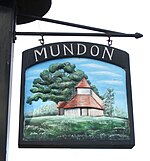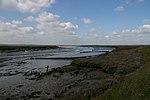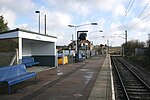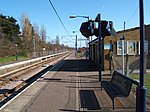Latchingdon

Latchingdon is a village situated in the Dengie Peninsula in Essex, England, south of the city of Chelmsford. The parish was at one time called Latchingdon-cum-Snoreham, and Snoreham Hall still exists to the south of Latchingdon. The place-name 'Latchingdon' is first attested in 1065 in a charter later published in the Diplomatarium anglicum edited by Benjamin Thorpe, where it appears as Laecedune. It appears in the Domesday Book of 1086 as Lacenduna, Lachenduna and Lessenduna. The name may derive from an unrecorded Old English word *læcce from the verb læccan to catch, meaning a trap, and related to the modern word 'latch'. The name would then mean 'hill with a trap', presumably to catch animals.
Excerpt from the Wikipedia article Latchingdon (License: CC BY-SA 3.0, Authors, Images).Latchingdon
Steeple Road, Essex
Geographical coordinates (GPS) Address Nearby Places Show on map
Geographical coordinates (GPS)
| Latitude | Longitude |
|---|---|
| N 51.671278 ° | E 0.726128 ° |
Address
Steeple Road
CM3 6JX Essex, Latchingdon
England, United Kingdom
Open on Google Maps










